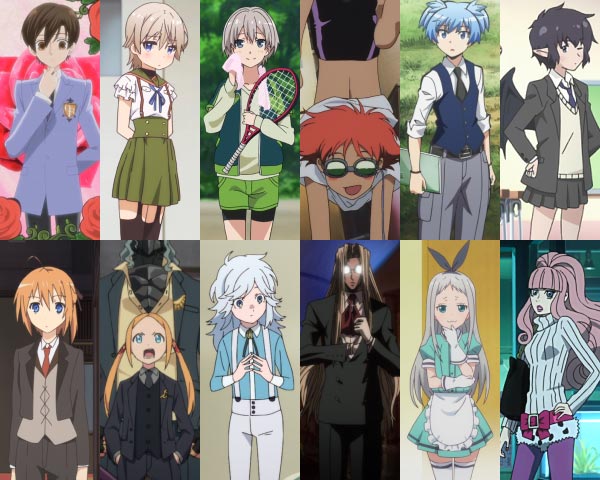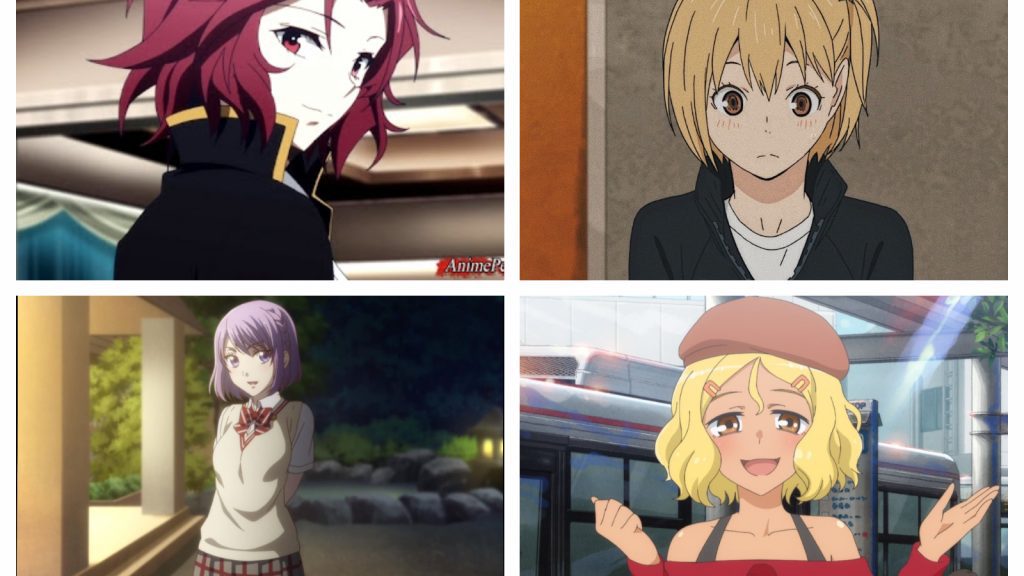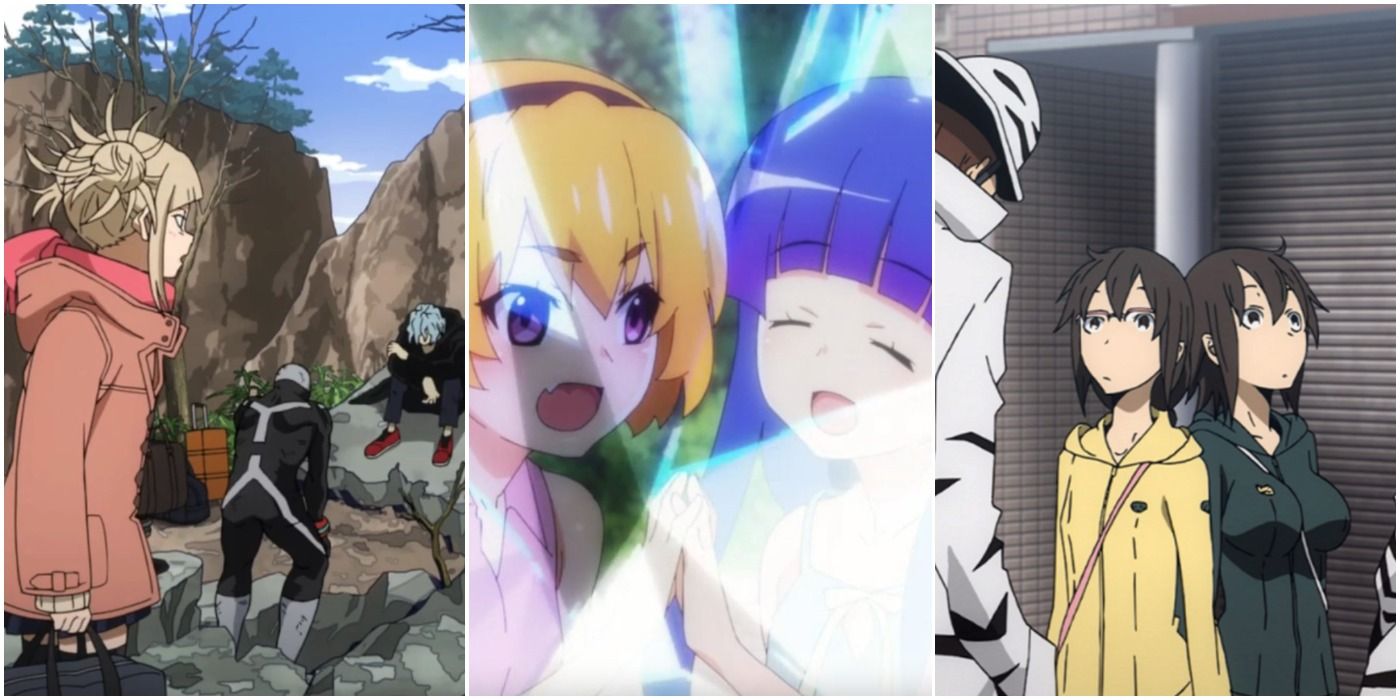Have you ever been watching an anime, so perhaps a new show from the Summer 2025 anime chart or maybe even something from the Fall 2024 anime season, and found yourself surprised by a character's gender? It's a common experience, you know, especially when you're just looking to discover new anime and find your new favorites. We often browse by season or studio, or even by specific tags to get info about each anime and add them to our personal anime list. Sometimes, however, a character can really catch you off guard, and that's where the idea of an "anime trap" comes into play for many viewers.
This particular term, "anime trap," refers to a character who is typically perceived as one gender but is, in fact, another. It's a concept that has a pretty long tradition within anime and manga, so it's not exactly a new thing. We're talking about characters who are often very androgynous, making their true gender a bit of a surprise, which can be quite a unique element in a story.
For many anime fans, understanding these character types can really add another layer to their viewing experience. It's about more than just a simple reveal; it's about exploring how gender presentation works in storytelling, and how these characters have been embraced by various fan communities, too it's almost. So, let's unpack what an anime trap is, where the idea came from, and some of the most well-known examples you might have come across.
Table of Contents
- The Origins of the Anime Trap
- Internet Culture and the "Trap Card"
- Iconic Anime Trap Characters
- Understanding the Reverse Trap
- Genderbending as a Modern Expression in Anime
- Discovering New Anime and Their Characters
- Frequently Asked Questions about Anime Trap
The Origins of the Anime Trap
The concept of an "anime trap" isn't something that just popped up recently, you know. It actually has roots stretching back quite a bit in the history of Japanese media. For instance, when we look for what might be considered the very first "straight trap" character, meaning a male character who is depicted in a way that makes him appear female, the year 1973 gives us a notable example.
That's when *Ara Waga Tono* appeared, and it seems to be the first to truly fit this particular description. It's pretty interesting how far back this goes, in a way. This shows that the idea of characters whose gender presentation might be misleading has been around for a very long time in anime and manga, suggesting a long tradition within these forms of storytelling.
There's a lot of romantic themes often associated with these characters, too. This early example just shows that the exploration of gender and appearance in anime isn't a modern invention, but rather a recurring element that creators have used for decades, sometimes even for dramatic or comedic effect. It really is a deep part of the medium's history, in some respects.
Internet Culture and the "Trap Card"
While the character type itself has historical roots, the term "anime trap" as we often hear it today, and its widespread use, really gained traction through internet culture. You know, specifically among communities like 4chan users. These online groups, they're the ones who really described androgynous anime characters as "traps," which then spread quite widely.
They even went as far as creating an internet theme day, you know, something called "Trap Thursday." This just shows how much the concept resonated with people online. It became a kind of inside joke or a recognized trope within these digital spaces, which is pretty fascinating, actually.
The phrase "you've activated my trap card" also played a big part in popularizing the term. This phrase, it was referenced back in 2007 on forums like Ars Technica and, yes, 4chan. It then made its way to Urban Dictionary, where it was first defined in July 2009. This definition really cemented the term in internet slang, making it more accessible to a broader audience. It's kind of like how words just catch on, you know, and suddenly everyone is using them.
This whole evolution from a character type to a widely recognized internet meme highlights how online communities can shape and spread cultural phenomena. It's a clear example of how fan discussions and shared humor can give new life and meaning to existing concepts from media, making them, you know, a bit of a phenomenon in their own right.
Iconic Anime Trap Characters
When we talk about anime trap characters, a few names usually come to mind almost immediately, you know. These characters have become pretty famous, often sparking a lot of discussion among fans. They're recognized for their distinctive appearances and the way they challenge typical gender perceptions in their respective stories.
Astolfo from Fate:GO
One of the most prominent examples, you know, is Astolfo. This character comes from the *Fate* series, specifically gaining a lot of popularity following their appearance in the anime *Fate/Apocrypha*. Within that anime, Astolfo is one of several paladins who are fighting on behalf of Charlemagne. They are depicted with a very youthful and, well, quite feminine appearance, which can be a bit surprising for some viewers, especially at first glance.
Following this appearance in the anime, Astolfo also showed up within *Fate/Grand Order*, often abbreviated as *Fate:GO*, which is a popular mobile game. This further cemented their status as a well-known character in the "trap" category. Their design and personality have made them a favorite for many fans, and they're often cited when people discuss this particular character trope. It's really quite something, how popular they became.
Felix Argyle from Re:Zero
Another very popular character who fits this description is Felix Argyle, also known as Ferris, from the anime *Re:Zero – Starting Life in Another World*. Felix is depicted as a man, but he has cat ears and often wears a dress, giving him a very distinctive and, well, adorable appearance. His design is quite striking, and it plays a significant role in his character's presentation.
Felix's presence in *Re:Zero* really highlights how anime uses these character designs to create memorable and sometimes, you know, playfully misleading figures. He's a catboy, which is a unique twist in itself, and his clothing choices just add to that visual flair. Fans often find Felix to be a very charming and loyal character, regardless of his gender presentation, which is pretty neat.
Understanding the Reverse Trap
While we've been talking about "anime traps," it's also worth noting that there's a related concept often called a "reverse trap." This is, you know, essentially the opposite scenario. A reverse trap is simply a girl who resembles a boy, which can also be quite a common trope in anime and manga.
This type of character is also known by another term: "bifauxnen." That word, "bifauxnen," is actually a portmanteau, which means it's a blend of two words. It combines "bishōnen," which refers to a beautiful young man, and "faux," which is a French word meaning "false." So, it literally means a "false beautiful boy," which is a pretty descriptive way to put it, you know.
Conversely, what is commonly referred to as a "trap" typically describes a male character who looks like a girl. Both of these tropes play with audience expectations regarding gender presentation and can lead to interesting character dynamics and plot points within a story. It's really about the visual surprise, in a way, and how that impacts the narrative.
Genderbending as a Modern Expression in Anime
The prevalence of "traps" and genderbending in anime is, I believe, a very modern expression of a much older artistic tradition. It's not just about a simple character design choice; it often reflects broader themes of identity, societal roles, and personal freedom. Anime, you know, provides a unique space where these concepts can be explored visually and narratively without always adhering to conventional norms.
These characters, whether they are "traps" or "reverse traps," often challenge viewers to think beyond traditional gender stereotypes. They can be incredibly popular, and their stories sometimes resonate deeply with audiences who appreciate the diversity and fluidity they represent. It's kind of like how art can push boundaries, you know, and make you think a little differently.
This artistic choice allows for a lot of flexibility in storytelling, too it's almost. It can be used for humor, for dramatic reveals, or simply to create unique and memorable characters that stand out. So, while the term "trap" might have its internet origins, the underlying concept of playing with gender presentation in characters has a rich and evolving history in anime.
Discovering New Anime and Their Characters
Exploring the world of anime means you're always going to discover new characters, and yes, sometimes that includes those who might fit the "anime trap" description. You can search thousands of anime by your favorite tags and genres, studios, years, and ratings, which makes finding these unique characters a bit easier, you know.
Whether you're looking at the seasonal anime chart for Fall 2024 or Summer 2025, there's always something new to find. You can track your progress, watch videos, and get info about each anime to add them to your personal anime list. This way, you can easily keep up with all the top anime and browse by season, studio, or tag.
Sometimes, an anime might seem a bit formulaic, and yes, it might be full of stuff you've seen time and time before, executed in a mediocre fashion. But what really bothers some people about it is the complete and utter lack of any truly surprising or unique elements. Characters like those we've discussed, however, often bring that unexpected twist that keeps things interesting.
So, as you continue to explore anime, keep an eye out for these fascinating character types. They add a lot of flavor and depth to the stories, and they're a big part of what makes anime so diverse and engaging for many viewers. You can learn more about anime character tropes on our site, and perhaps even find your new favorites by exploring our extensive anime database.
Frequently Asked Questions about Anime Trap
What does "anime trap" actually mean?
Basically, an "anime trap" refers to a character, usually male, who is designed to look like the opposite gender, typically female. It's about their appearance being somewhat misleading to the viewer, you know, creating a surprise when their true gender is revealed.
Are "anime traps" and "reverse traps" the same thing?
No, they're not the same, actually. A "trap" usually means a male character who appears female. Conversely, a "reverse trap," also known as a bifauxnen, is a girl who resembles a boy. They're opposite concepts, you know, playing with gender presentation in different ways.
Where did the term "trap" in anime come from?
The term gained widespread use through internet communities like 4chan, you know, where users described androgynous anime characters as "traps." It was also popularized by the phrase "you've activated my trap card," which was referenced on forums and defined on Urban Dictionary in 2009.



Detail Author:
- Name : Brandyn Wehner
- Username : zkshlerin
- Email : davion63@hotmail.com
- Birthdate : 1983-04-27
- Address : 51935 Purdy Harbors Suite 723 Rahsaanchester, GA 23375
- Phone : 479.569.2198
- Company : Feeney-Kuhn
- Job : Food Service Manager
- Bio : Libero neque a iusto ipsa error eum suscipit. Deserunt quis non modi et sunt et. Recusandae necessitatibus deserunt quia ut voluptatem. Nihil consequatur ut ducimus laudantium minus.
Socials
tiktok:
- url : https://tiktok.com/@ibrahim.lubowitz
- username : ibrahim.lubowitz
- bio : Veritatis veniam sit corrupti nemo amet dolore cum.
- followers : 1014
- following : 1428
facebook:
- url : https://facebook.com/ibrahim_id
- username : ibrahim_id
- bio : Eos voluptatibus expedita quos minima. Voluptas omnis quae minima enim culpa.
- followers : 3763
- following : 2769